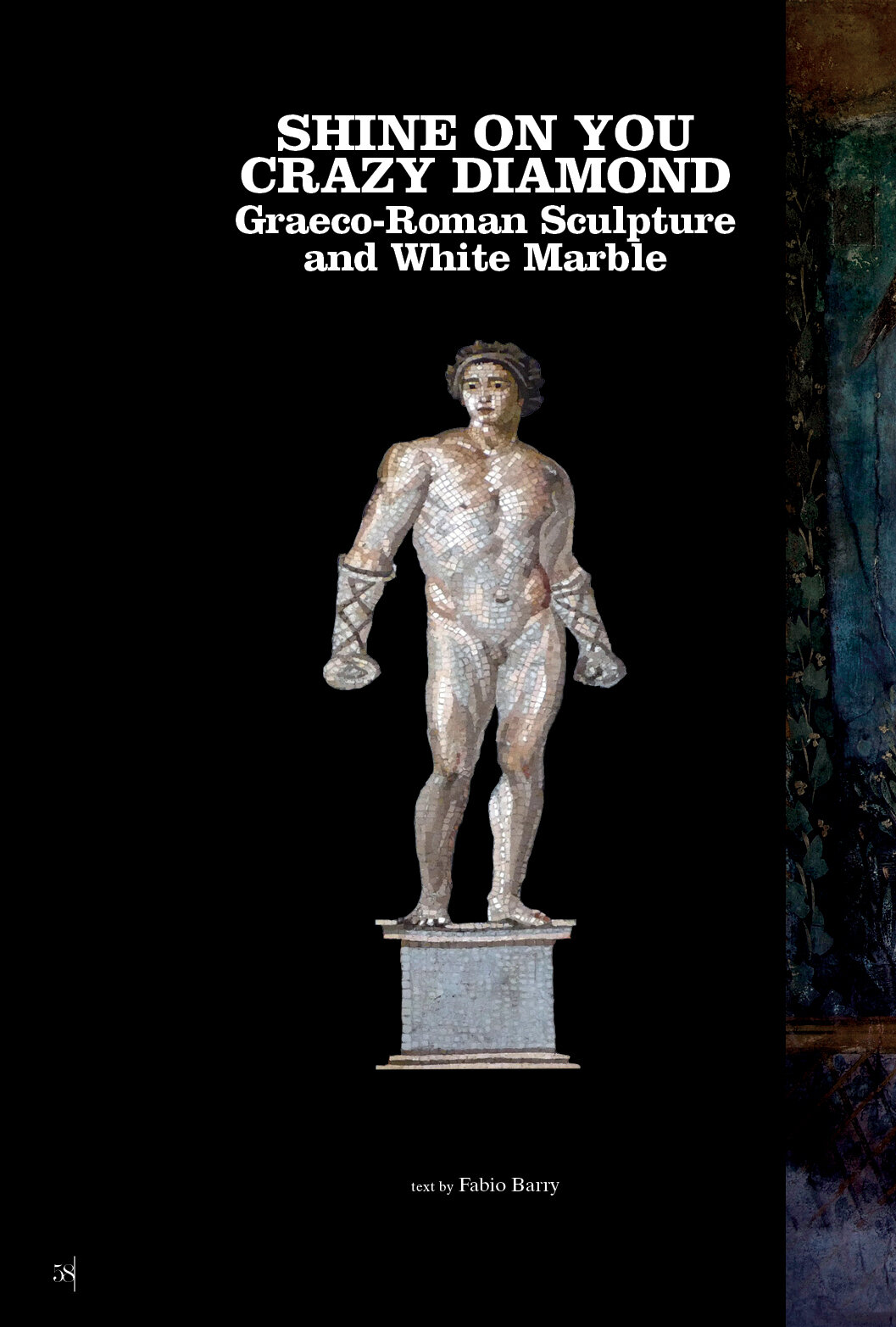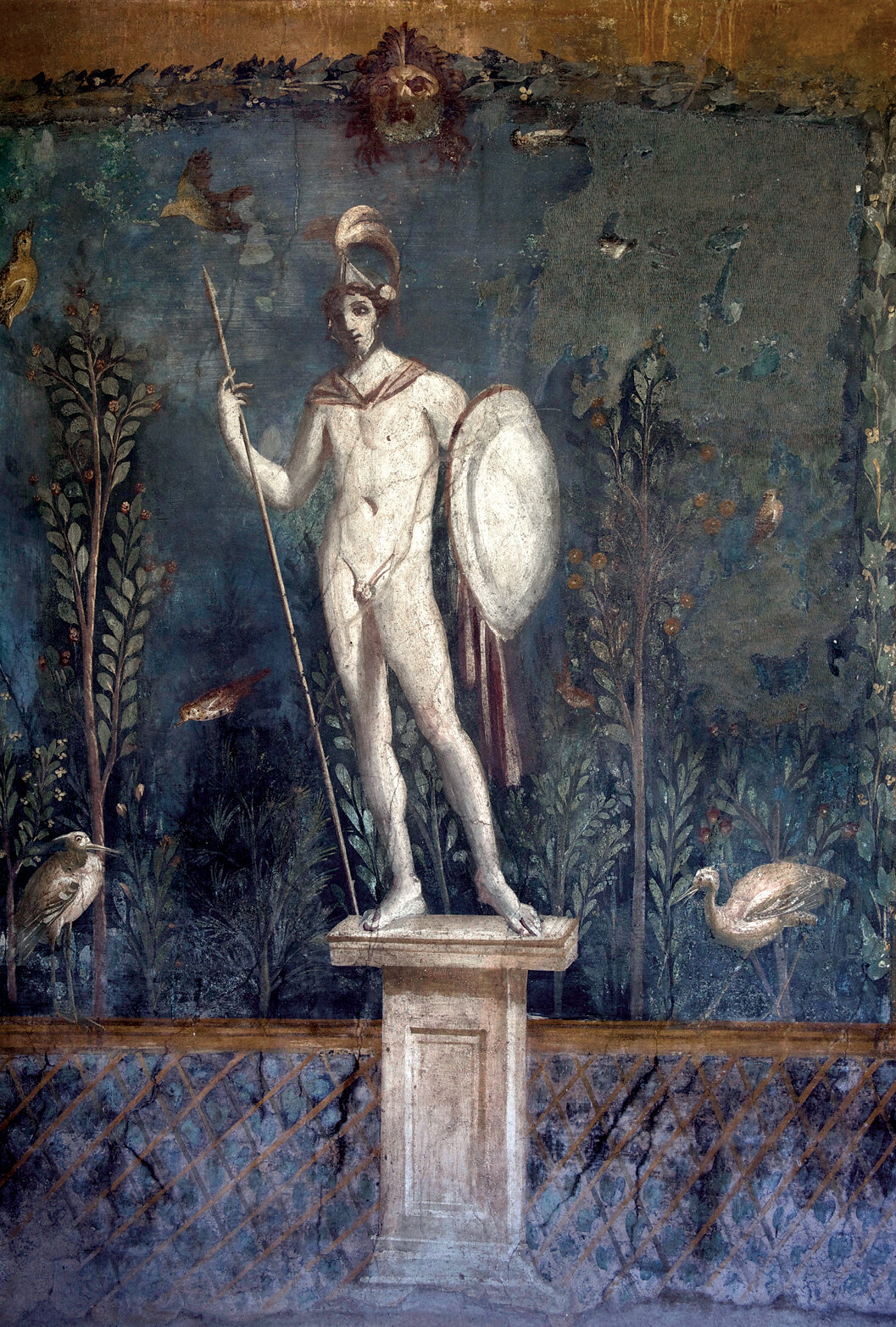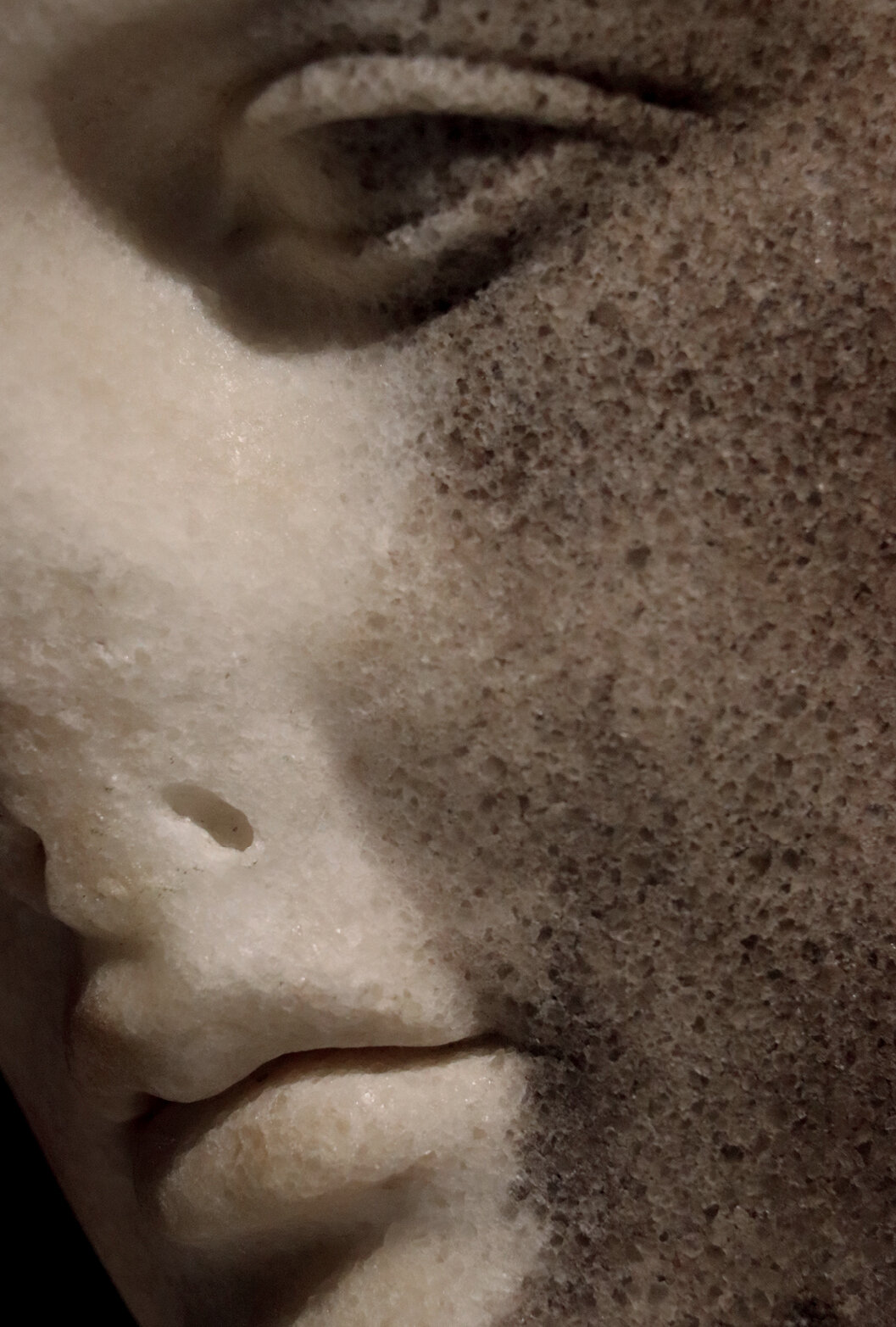Vol. 3
Shine on you Crazy Diamond
Graeco-Roman Sculpture and White Marble
text by Fabio Barry
Controversy rages over the extent to which Graeco-Roman statues were originally painted. Infrared reflectography and fluorescence spectroscopy have revealed traces of extensive polychromy before it was erased by exposure and erosion. However, modern reconstructions are frequently submerged under paint of the most saturated hue. It is as though the white marble were only “blank”, waiting to be “coloured in” to gain “life”. Yet the polished stone had an intrinsic value in itself. It radiated an other-worldly luminosity, which was enhanced by waxing, and ancient pilgrims were sometimes advised to shield their eyes from the glare. To obscure this with pigment would have been like painting over gold, or amber, or crystal.
Statues were painted of course, but subtly and with semantic selectivity. Consider two representations of statues, both from Pompeii. A mosaic shows us a white statue of a victorious boxer, but his hair and eyes are dark, and in the shadows and reflected light we see the flush of the flesh over bulging muscles. In a fresco, the statue of Mars is instead as white as a baker covered in flour, except for his hair, mascaraed eyes, and pink cloak. Could it be that the difference between the statues is that one depicts a man—however much he has been put on a pedestal—and the other represents a god? That is, the white marble of the statue of Mars does not mimic the pallor of human skin, but vouches for the luminosity of divine flesh.






